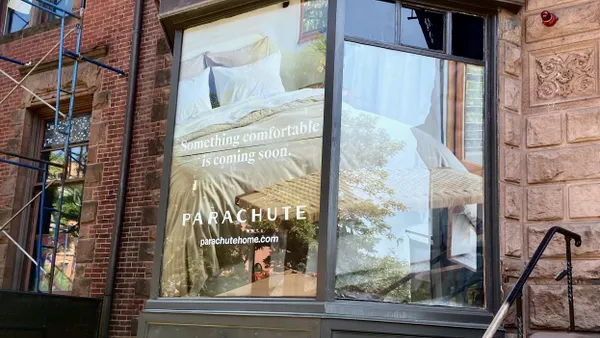Dive Brief:
- Amazon is raising the price of its flagship Prime membership in the U.S. by $20, increasing the annual fee from $99 to $119, CFO Brian Olsavsky said on a conference call Thursday. The e-commerce giant also offers lower-priced memberships, for students and people on federal assistance programs, for example, but even at full price Olsavsky called it the best deal in retail considering its many perks.
- The announcement came as the company reported that first quarter net sales rose 43% to $51 billion from $35.7 billion in the year ago period, according to a press release. Profit in the quarter came to $1.6 billion or $3.27 per diluted share, up from $724 million or $1.48 per diluted share last year, and operating income rose 92% to $1.9 billion up from $1 billion a year ago.
- In the press release, the e-commerce giant called out the success of AWS, its cloud services unit, which saw revenues grow 49% and provided the bulk ($1.4 billion) of Amazon's operating income.
Dive Insight:
Amazon turned in a blockbuster quarter on Thursday, providing plenty of evidence that it's taking market share against its rivals even as it announced a price increase for admission to its expanding ecosystem. The question of how a retailer can compete against Amazon has become standard in the industry, but it could be based on the wrong premise, considering that there are few retailers with the sprawling (and growing) businesses in cloud services, entertainment, advertising and shipping that Amazon has.
"It’s getting clearer and clearer that Amazon is a tech company and a media company with a retail arm, rather than a retail company with a tech or media arm," Profitero Senior Vice President of Strategy and Insights Keith Anderson told Retail Dive in an interview.
The company continues to plow money into various aspects of its operations, from fulfillment to entertainment. Executives on Thursday, for example, said that, while they would continue to partner with third-party shippers for fulfillment, investment into its own shipping operations was necessary and would continue. That attitude is paying off, suggested Moody’s Lead Retail Analyst Charlie O’Shea, who noted that its "liquidity remains formidable" leaving plenty of cushion for yet more investment.
“Q1 for Amazon continues the trend of investment-fueled revenue expansion, with the company eclipsing the $50 billion mark, and overall results are credit positive,” he said in an email to Retail Dive. “On the North American Product side, 26% year-over-year revenue growth ([minus] Whole Foods, which added around $4 billion) was supported by around 100 basis points in operating margin expansion, indicating that investments are gaining traction.”
The company's cloud services unit is hitting its stride, executives said on a conference call Thursday evening, and Moody’s Technology Analyst Stephen Sohn noted the effect on margins. “On the AWS front, the sales increase of almost 50% was accompanied by around a 140 basis point improvement in operating margin, indicating that enterprises continue to shift increasing IT workloads into the public cloud,” he said in comments emailed to Retail Dive.
The company also provided a litany of factoids about Alexa, the voice assistant that proved itself to Jeff Bezos over the holidays, and is now being improved and expanded constantly. Amazon recently announced a new Alexa-enabled Echo device for kids, for example, along with an adjustment allowing users to give follow-up directions, and "Alexa Skill Blueprints," where customers with no programming experience can create their own personalized Alexa skills, among other changes.
But, along with the dominance of AWS and advertising in Amazon's growth, is the question of its $20 hike — why it was made, how it might affect subscription rates or whether it could change Prime users' shopping behavior. Last week, CEO Jeff Bezos in a letter to shareholders revealed that Amazon has more than 100 million paid Prime members globally, a statistic that analysts have been guessing at for years, so the hike, which takes effect May 11 for new subscribers and renewals starting June 16, will net the company a good amount of cash.
"The value of Prime to customers has never been greater," Olsavsky said Thursday. "The costs are also high."
The increase could curtail Prime's signups or renewals, but Amazon may not be too concerned about that, Anderson said.
"It's instant net new revenue, but I don’t know that it’s ever as simple or clear that by raising this $20 that it’s offsetting this or that," he said. "They clearly wanted to demonstrate their earnings potential in this quarter, basically saying 'We’ll pull the levers, sometimes the supplier levers, sometimes the customer levers.' I think they’re just realizing that they're getting more profitable growth by deeply entrenching themselves in more members' lives. They don't want 40% of the entire population, they want 80% of a clearly defined [part of] the population. But they're still there for the mass market. Anybody can order anything from Amazon."














